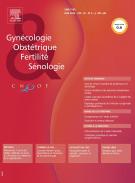Prévention secondaire de l'infection foetale à cytomégalovirus par l’administration de valaciclovir dans les primo-infections maternelles périconceptionnelles et du premier trimestre de la grossesse - 03/04/25
Secondary Prevention of Fetal Cytomegalovirus Infection Through Valacyclovir Administration in Maternal Primary Infections During the Periconceptional Period and First Trimester of Pregnancy

Résumé |
Objectifs: La prise orale de valaciclovir à 8 g/jour réduit significativement le taux de transmission verticale du CMV chez les femmes présentant une primo-infection à CMV acquise en période périconceptionnelle ou au cours du premier trimestre. L'objectif de cette étude est d'élargir les résultats des études déjà publiées en incluant toutes les cohortes récentes sur le sujet.
Méthodes: Les bases de données MEDLINE, Scopus, Cochrane Central Register of Controlled Trials (Central) ainsi que le registre « clinical trial (www.clinicaltrials.gov) ont été consultés. Les essais contrôlés randomisés et les études de cohorte administrant du valaciclovir per os à 8 g/jour chez des femmes enceintes avec une primo-infection à CMV acquise en périconception ou au cours du premier trimestre ont été inclus. Les outils Cochrane’s Risk of Bias 2 et Robins I ont été utilisés pour l'évaluation du risque de biais. Le résultat de la PCR CMV dans le liquide amniotique était le critère de jugement principal. Une méta-analyse à deux étapes des données individuelles des patientes a été réalisée, et une analyse de sous-groupes a été effectuée, en évaluant séparément les infections périconceptionnelles et celles du premier trimestre.
Résultats: Quatre études (1 essais contrôlés randomisés et 3 cohorte) ont été incluses dans l'analyse (n=860 femmes). Une réduction significative du taux de transmission verticale du CMV est observée dans le groupe valaciclovir (aOR)=0,39 (IC à 95% 0,25-0,59). Cette réduction était significative tant pour la période périconceptionnelle (aOR= 0,30 (IC à 95% 0,13-0,68)) que pour le premier trimestre (aOR=0,47 (IC à 95% 0,28-0,78)). La valaciclovir a également réduit le taux d'infections néonatales, aOR=0,45 (IC à 95% 0,25-0,83), à partir des 2 périodes considérées (aOR= 0,42 (IC à 95% 0,20-0,90)) et (aOR=0,54 (IC à 95% 0,29-0,99)).
Conclusions: Ainsi, les données actuelles suggèrent que le valaciclovir per os (8 g/jour) est associé à une réduction du taux de transmission verticale du CMV à la suite d'une primo-infection maternelle acquise en période péri-conceptionnelle ou au cours du premier trimestre de la grossesse.
Le texte complet de cet article est disponible en PDF.Abstract |
Objectives: Oral administration of valacyclovir at 8 g/day significantly reduces the rate of vertical transmission of CMV in women with a primary CMV infection acquired during the periconceptional period or the first trimester. The aim of this study is to expand the findings of previously published studies by including all recent cohorts on the subject.
Methods: The MEDLINE, Scopus, Cochrane Central Register of Controlled Trials (Central), and "clinical trial" registry (www.clinicaltrials.gov) were consulted. Randomized controlled trials and cohort studies administering oral valacyclovir at 8 g/day to pregnant women with a primary CMV infection acquired during the periconceptional period or the first trimester were included. Cochrane's Risk of Bias 2 and ROBINS-I tools were used to assess the risk of bias. The result of the CMV PCR in the amniotic fluid was the primary outcome. A two-step individual patient data meta-analysis was conducted, and a subgroup analysis was performed, evaluating periconceptional and first-trimester infections separately.
Results: Four studies (1 RCT and 3 cohorts) were included in the analysis (n=860 women).
A significant reduction in the rate of the CMV vertical transmission was observed in the Valacyclovir group (aOR=0.39, 95% CI 0.25–0.59). This reduction was significant for both the periconceptional period (aOR=0.30, 95% CI 0.13–0.68) and the first trimester (aOR=0.47, 95% CI 0.28–0.78). Valacyclovir also reduced the rate of neonatal infections, aOR=0.45 (95% CI 0.25–0.83), for both periods considered (aOR=0.42, 95% CI 0.20–0.90, and aOR=0.54, 95% CI 0.29–0.99).
Conclusions: The current evidence suggests that oral valacyclovir (8 g/day) is associated with reduction of the rate of vertical transmission of CMV following maternal primary infection acquired during the periconceptional period or the first trimester of pregnancy.
Le texte complet de cet article est disponible en PDF.Mots-clés : Cytomegalovirus, Infection foetale, Prévention secondaire, Valacyclovir, Méta-analyse
Keywords : Cytomegalovirus, Fetal infection, Secondary prevention, Valacyclovir, Meta-analysis
Bienvenue sur EM-consulte, la référence des professionnels de santé.
L’accès au texte intégral de cet article nécessite un abonnement.
Déjà abonné à cette revue ?

